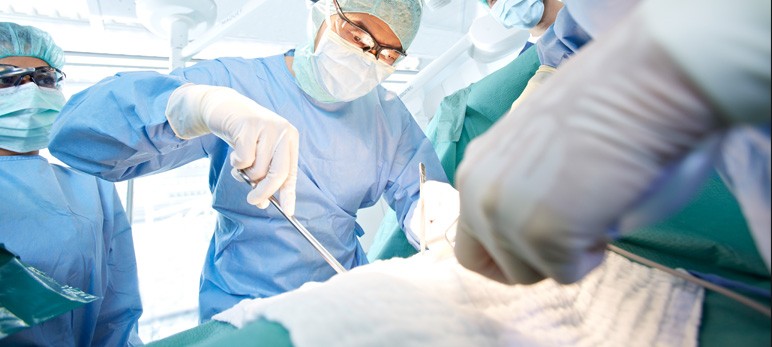Everything There is to Know About Laparoscopic Surgery

Laparoscopic surgery, or minimally invasive surgery, is a specialized technique used to perform surgery. It is a diagnostic process in which the surgeon uses a thin device with an attached light and camera which helps them visualize organ damage and disease more clearly. Even though it was used only for gynecologic and gall bladder surgery in the past, it is now used for intestinal surgery as well.
One way in which it is different from the traditional ‘open’ surgery is that it uses several incisions each 0.5-1cm wide. These incisions are known as ports, and it is through these ports that a tubular instrument, known as trochar, is inserted. Once this is done, specialized instruments, including a special camera called a laparoscope, is passed through the trochars.
In the beginning of the surgery, the abdomen is inflated with carbon dioxide so that the surgeon has access to a good working and viewing space. Then, the laparoscope transmits images from the abdominal cavity to the monitor. This allows the surgeon to watch detailed and minute images of the abdomen on the monitor. This also results in performing the same surgery, but with minimal and smaller incisions.
There are many reasons for conducting a laparoscopy. Some of the common reasons are:
One major advantage of this surgery is that the patients experience less pain. The recovery time is also shorter and there is less scarring as compared to traditional open surgery.
The safety involved in laparoscopic surgery is the same as in traditional open surgery. However, like any other surgery, this procedure also has its own risks. These include complications related to anesthesia and bleeding or infections. The probability of risks also depends on an individual’s general health along with his/her other medical conditions. Some risks include:
To reduce risks, it is important to go to a hospital, which offers the best facilities for laparoscopic surgery in India, the likes of Fortis La Femme.
During the recovery period, there are certain problems that a person can experience. These include:
However, if you experience worsening of the pain, nausea or vomiting, heavy vaginal bleeding, fainting, signs of infections, inability to empty the urinary bladder, or shortness of breath, it is advisable to consult your doctor and discuss these problems. If the above mentioned symptoms persist for more than a few days, an appointment with your physician is a must. It is always a good idea to be in touch with your doctor to avoid any complications or unnecessary problems.
